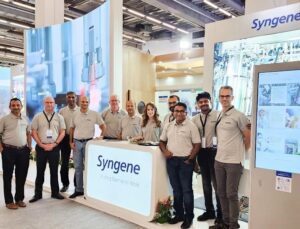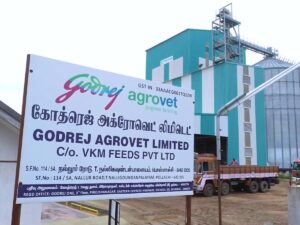1. At a Glance
Imagine spending 30 years cooking up molecules for global pharma giants — and still getting graded every quarter like a college student. Welcome toSyngene International Ltd, India’s original contract research lab-turned-biotech service behemoth.
In Q2FY26, Syngene served up revenue of ₹911 crore (up 2.2% YoY) — barely a twitch on the growth chart — while profit after tax (PAT) fell 37% YoY to ₹67 crore. OPM shrunk to 22% from 27% last year. The once high-flying Biocon offspring seems to be running low on reagents of optimism.
At ₹647 per share (as of Nov 4, 2025), with a55.6xP/E and ₹26,052 crore market cap, Syngene’s valuation looks like a molecule that refused to break down — stubbornly high despite slowing reactions in its earnings flask. The stock is down 25% over the past year, but hey, it’s still trading at 5.5x book value — because, why not, right?
ROE stands at 10.5%, ROCE at 13.5%, and dividend yield a shy 0.19% — like a stingy scientist hoarding chemicals.
So, is Syngene still India’s CRAMS crown jewel or just a well-decorated lab struggling to scale its next experiment? Buckle up, let’s dissect this under the financial microscope.
2. Introduction – When Your DNA is R&D and Your ROE Needs CPR
Syngene started in 1993, back when “biotech” in India was basically just Biocon and brave scientists in lab coats trying to explain what CRO meant at dinner tables. Today, Syngene is the country’s most respected contract research and manufacturing services company — or in desi terms, “global pharma ka theka”.
From drug discovery to development to manufacturing, Syngene offers a full-service menu — and global giants like Amgen, GSK, Sanofi, J&J, and Bayer keep coming back for second servings. It’s got over 6,000 scientists working in 1.9 million sq. ft. of research and manufacturing space. That’s practically a small city of people who live off pipettes and protein chains.
But here’s the twist: while the company’s reputation sparkles brighter than a centrifuge rotor, its stock chart looks like a patient’s ECG during a fainting spell. Growth has decelerated, margins have eroded, and PAT has plateaued around ₹468 crore (FY25 TTM).
Is Syngene the victim of temporary lab contamination — or a maturing CRO business model meeting valuation fatigue? Let’s find out what’s really cooking in those cleanrooms.
3. Business Model – WTF Do They Even Do?
In simplest terms: Syngene is the behind-the-scenes R&D genie that pharma companies rub when they want new drugs without buying new headaches.
Its four business divisions are the four heads of this scientific hydra:
a) Discovery Services:Where molecules are born. Syngene scientists work with clients to identify promising drug candidates. It’s mostly FTE-based (Full-Time Equivalent) contracts — basically renting out brainpower on subscription.
b) Development Services:Once a molecule passes the Tinder swipe stage, Syngene helps it move into pre-clinical and clinical testing — the fee-for-service (FFS) model. It’s the “middle child” of the portfolio — not as glamorous as discovery, but absolutely critical.
c) Manufacturing Services:Here, the lab coat gives way to hard hats. This includes clinical and commercial-scale manufacturing — from small molecules (APIs) in Mangalore to biologics in Bangalore.
d) Dedicated R&D Centers:Long-term relationships (5+ years) with big clients like Amgen, Baxter, and BMS. Basically, Syngene builds custom labs for them, hires scientists, and runs operations end-to-end.
With these four pillars, Syngene is essentially India’s biotech outsourcing machine — like Infosys, but for molecules. Except instead of debugging code, they debug proteins.
4. Financials Overview
Quarterly Performance Snapshot (₹ crore)
| Metric | Q2 FY26 | Q2 FY25 | Q1 FY26 | YoY % | QoQ % |
|---|---|---|---|---|---|
| Revenue | 911 | 891 | 874 | 2.2% | 4.2% |
| EBITDA | 215 | 245 | 206 | -12.2% | 4.4% |
| PAT | 67 | 106 | 87 | -36.8% | -23.0% |
| EPS (₹) | 1.67 | 2.64 | 2.15 | -36.7% | -22.3% |
Annualised EPS = ₹1.67 × 4 = ₹6.68 → At CMP ₹647 →P/E = 96.9x(not meaningful, but spicy).
Commentary:Flat revenue, falling profits, and yet an 80+ P/E club invite? Investors clearly love science more than math. The 22% OPM is decent, but for a company once posting 30%+ margins, this feels like losing your lab coat in a sterile zone.
5. Valuation Discussion – The
Science of Expensive Multiples
Let’s play fair value chemistry using three lab-approved methods:
A) P/E Method:
- Current EPS (TTM): ₹11.6
- Historical 5-year average P/E: ~50x
- Industry P/E: 39.5x
Fair value range = ₹11.6 × (40–50) = ₹464 – ₹580
B) EV/EBITDA Method:
- EV/EBITDA (TTM): 23.6x
- If we normalize for long-term average 18–20x,→ Fair value = (EBITDA ₹1,033 Cr × 18–20x) / shares ≈ ₹550–₹610
C) DCF (Discounted Cash Flow) – Simplified Science Edition:Assume:
- Free cash flow (FY25): ₹1,042 Cr
- Growth: 8%
- Cost of capital: 10%→ DCF value ≈ ₹27,000–₹29,000 Cr → Per share ₹670–₹720
👉 Fair Value Range (Educational Only): ₹550 – ₹700 per share.(Disclaimer: This fair value range is for educational purposes only and not investment advice.)
6. What’s Cooking – News, Triggers, Drama
2025 has been an eventful year for Syngene — some wins, some lab leaks (figuratively):
- Biologics Boost:The company completed the acquisition of Stelis Biopharma’s biologics manufacturing facility — adding 20,000 litres of drug substance capacity and a high-speed fill-finish line. This expands its biologics muscle, expected to go live in H2FY25.
- US Expansion:In March 2025, Syngene acquired itsfirst US manufacturing facilityfrom Emergent BioSolutions for $56 million — a bold leap into the world’s largest pharma market.
- Leadership Shuffle:Peter Bains took charge as MD & CEO in April 2025 — a move meant to inject global commercial DNA into Syngene’s culture.
- Tax Troubles:The company has faced tax demand adjustments worth ₹100+ crore for older years (AY 2015–19), but expects no material impact.
- USFDA VAI Outcome:June 2025 inspection concluded with “Voluntary Action Indicated” — a clean chit in regulatory terms.
In short, management’s juggling new facilities, old tax ghosts, and global expansions — all while explaining to investors why profits just shrank faster than a PCR sample in dry ice.
7. Balance Sheet – The Lab Ledger
(₹ crore, Consolidated)
| Metric | Mar 2023 | Mar 2024 | Sep 2025 |
|---|---|---|---|
| Total Assets | 5,831 | 6,152 | 6,542 |
| Net Worth (Equity + Reserves) | 3,618 | 4,258 | 4,735 |
| Borrowings | 815 | 555 | 582 |
| Other Liabilities | 1,398 | 1,339 | 1,226 |
| Total Liabilities | 5,831 | 6,152 | 6,542 |
Commentary:
- Borrowings up slightly, but debt-to-equity still a peaceful 0.12 — cleaner than a

















